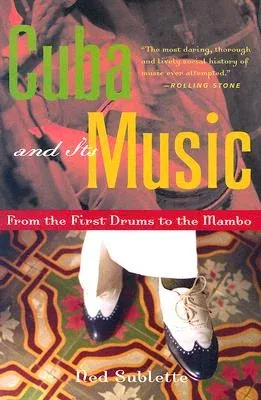Ned Sublette
(Author)Cuba and Its Music: From the First Drums to the MamboPaperback, 1 February 2007

Qty
1
Turbo
Ships in 2 - 3 days
In Stock
Free Delivery
Cash on Delivery
15 Days
Free Returns
Secure Checkout

Print Length
672 pages
Language
English
Publisher
Chicago Review Press
Date Published
1 Feb 2007
ISBN-10
1556526326
ISBN-13
9781556526329
Description
Product Details
Author:
Book Format:
Paperback
Country of Origin:
US
Date Published:
1 February 2007
Dimensions:
22.86 x
15.37 x
3.48 cm
Genre:
Caribbean
ISBN-10:
1556526326
ISBN-13:
9781556526329
Language:
English
Location:
Chicago, IL
Pages:
672
Publisher:
Weight:
902.65 gm